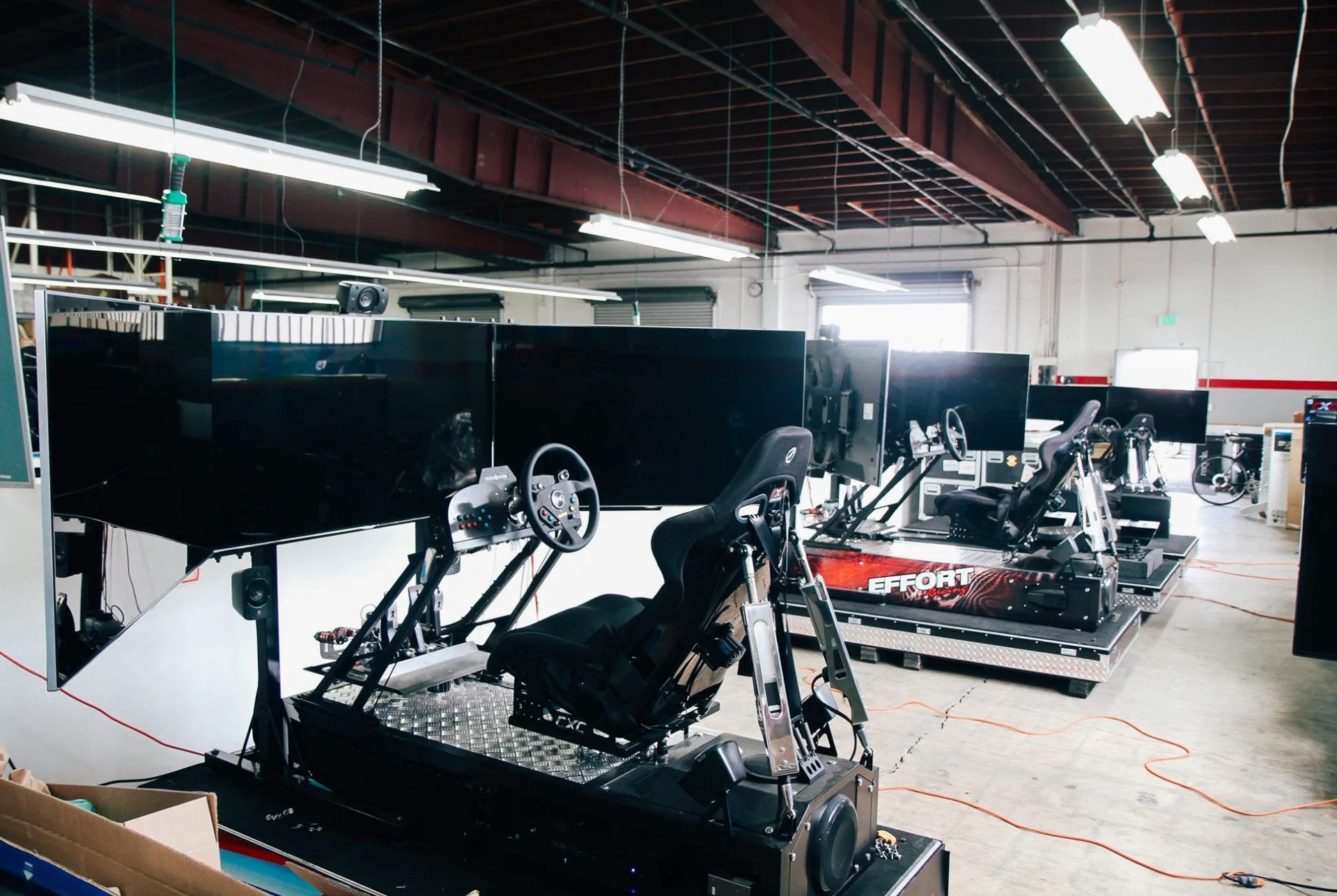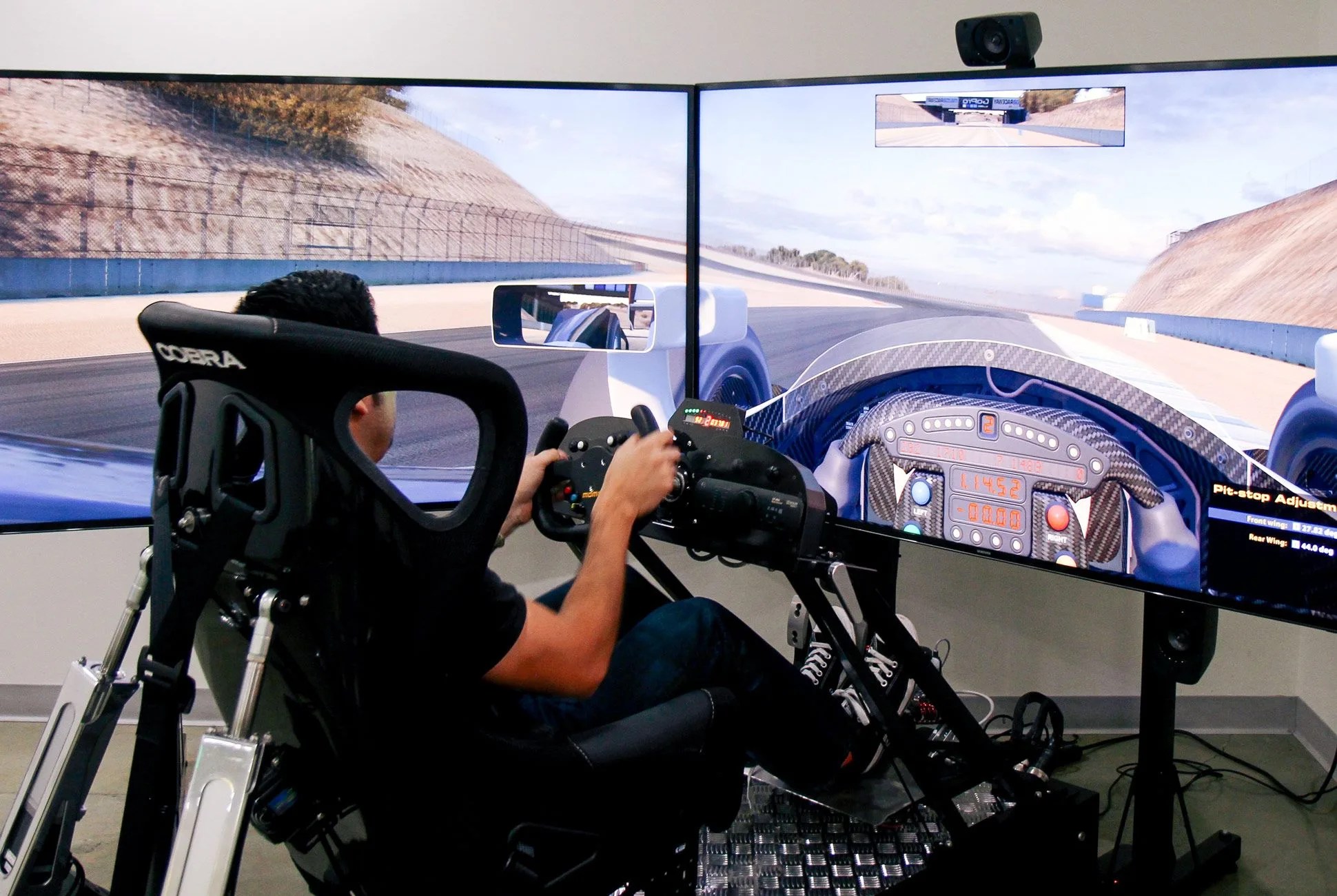Chris Considine is walking me through the CXC Simulations production line in a light-flooded warehouse in El Segundo, near LAX Airport, with roll-up doors and shiny concrete floors. There are dozens of 55-inch Samsung 4k monitors lined neatly in the corner, Sparco racing seats waiting to be bolted to machines and the shell of an old NASCAR car in the corner. “We are starting to make simulators that are so realistic, you could hurt yourself,” he says. “If we removed all safety interlocks, it would go to full realistic mode.”
And what exactly does “full realistic mode” mean in a CXC simulator? It means you’re belted firmly into a racing seat, driving a car that took about five years to accurately model, on a race track laser-scanned within a millimeter of accuracy, where a crash into the wall could mean a broken wrist if you don’t take your hands off the wheel. “The reality is, we never deliver simulators without safety interlocks,” Considine clarifies (unless they’re for professionals). This is good, since I am minutes away from taking the wheel of a GT3 race car (which I’ve never driven) at Mazda Raceway Laguna Seca (which I’ve never been around).
The seatbelt tensioner locks me into the racing seat, surrounded by three 75-inch monitors, giving me a 180-degree field of view. By the time I finish my 45-minute session, I’ve crashed twice and I’m sweating profusely. My arms are ragged and my core is beleaguered, like I had actually been lapping the track all day. But I didn’t wear my rotors, burn my tires, or shave my brake pads, which would all need attention after a normal day of racing.
“If you can take yourself to the limit over and over again without spending $10,000 running your car, that’s a big thing,” Considine told me. “[Racing] was going to be my profession,” he added. “When I moved up the ladder, test days started costing $10,000 a day. And for that $10,000 I hoped to get an hour and a half of actual on-track time. That’s a barrier to entry.”

With CXC’s simulator starting at $49,000, it’s not exactly cheap, but it does provide a realistic option for racing teams looking to cover hundreds of miles and train up-and-coming talent at a fraction of the cost. One young driver, Porsche’s Michael Lewis, trains on the system weekly in a Porsche 911 GT3R, the same car that he races. “The little nuances you find when you’re at the limit of driving…that’s what I feel the simulator really helps with,” according to Lewis.
“We have a very unusual, complicated and amazing tire model that I’m not sure exists anywhere in the world, even among the [car] manufacturers,”
